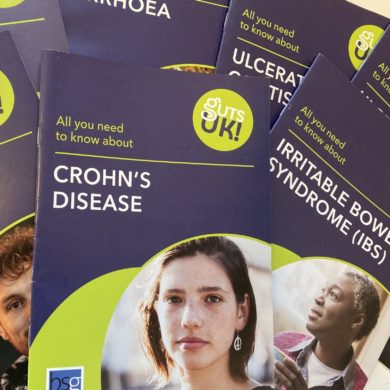
Do you feel that you have a problem with food causing digestive symptoms? Have you have ever been tempted to pay for a test that claims to identify your food intolerance? Here, we have put together all you need to know about ‘food intolerance testing.’
There are a few tests that are widely marketed in a way that would suggest that they can test you for a food intolerance (at a price). Unfortunately, there is no evidence that these tests can successfully identify a food intolerance.
IgG Blood Test
IgG is a protein in the blood that functions as an antibody. These commerical tests look for IgG4 for many food groups in the blood. If a result is positive, it is advised that you remove that food from the diet.
There is no strong evidence that these tests accurately identify a food intolerance. In fact, allergy doctors have investigated these tests and they have shown that you’re more likely to be told you have a positive food intolerance to a food you consumer regularly, not one you’re intolerant too.
Applied Kinesiology
This test reports to identify how the muscles in your body respond when a vial food is held. There is no scientific basis for this test.
Hair Analysis
This is where a small sample of hair is sent to a laboratory for testing. It can be used to identify heavy metal poisoning and drug use over time, but there is no good evidence that it is a way of identifying a food intolerance.
Leukocytoxic
This test is where white cells in the blood are mixed with different food groups. If the cells swell up, then you are told you are intolerant to that food group. There is no scientific basis for this test.
Vega (electrodermal) Test
This test measures electronic current when the body is exposed to a food item. There is no scientific basis for this test either.
 You may hear people saying they feel a lot better once they removed a food that one of the above tests suggested they were intolerant to. Two of the common foods consumed in the UK are milk and wheat. In these intolerance tests, these two groups often prove positive. However, people with Irritable Bowel Syndrome (IBS) for example, can have intolerances to the lactose (a sugar in milk) and fructans (a carbohydrate in wheat). This explains why (for some people) symptoms may improve when removing these groups from their diet. But this doesn’t mean that completely excluding one or both of these food groups is fully necessary. For example, lactose free cow’s milk is suitable in IBS. Being overly restricted can risk malnutrition.
You may hear people saying they feel a lot better once they removed a food that one of the above tests suggested they were intolerant to. Two of the common foods consumed in the UK are milk and wheat. In these intolerance tests, these two groups often prove positive. However, people with Irritable Bowel Syndrome (IBS) for example, can have intolerances to the lactose (a sugar in milk) and fructans (a carbohydrate in wheat). This explains why (for some people) symptoms may improve when removing these groups from their diet. But this doesn’t mean that completely excluding one or both of these food groups is fully necessary. For example, lactose free cow’s milk is suitable in IBS. Being overly restricted can risk malnutrition.

The gold standard method of identifying a food intolerance is to exclude the food item. Symptoms should go when removing the food, and more importantly, reintroduce the food and symptoms should return.* No testing is needed and therefore, advice should be sought from a dietitian throughout the process. Ask your doctor to see a dietitian if this applies to you.
Perhaps more importantly, do no self-diagnose your symptoms. See your doctor before you change your diet to get the true cause of symptoms identified.
*This should not be attempted in food allergy or where allergy is suspected, please seek specialist advice.
 Did you find this information useful?
Did you find this information useful?
Guts UK can only continue producing expert patient information with your kindness and support. Please support Guts UK by donating today. Together, we can reach more people who need us, but don’t know we exist yet. Thank you.
Guts UK is the charity for the digestive system (all 25ft of it!) Our guts have been underfunded, understaffed and undervalued for decades. We exist to change that.
Champion our cause; help us fight digestive diseases and change the lives of millions of people in the UK by supporting our work today.
DISCOVER MORE:
Copyright © 2024 Guts UK. This leaflet was published by Guts UK charity in 2021 and will be reviewed in 2024. The leaflet was written by Guts UK and reviewed by experts in testing and has been subject to both lay and professional review. All content in this leaflet is for information only. The information in this leaflet is not a substitute for professional medical care by a qualified doctor or other healthcare professional. We currently use AI translation tools on our website, which may not always provide perfect translations. Please check for further explanation with your doctor if the information is unclear. ALWAYS check with your doctor if you have any concerns about your health, medical condition or treatment. The publishers are not responsible or liable, directly or indirectly, for any form of damages whatsoever resulting from the use (or misuse) of information contained or implied in this leaflet. Please contact Guts UK if you believe any information in this leaflet is in error.


